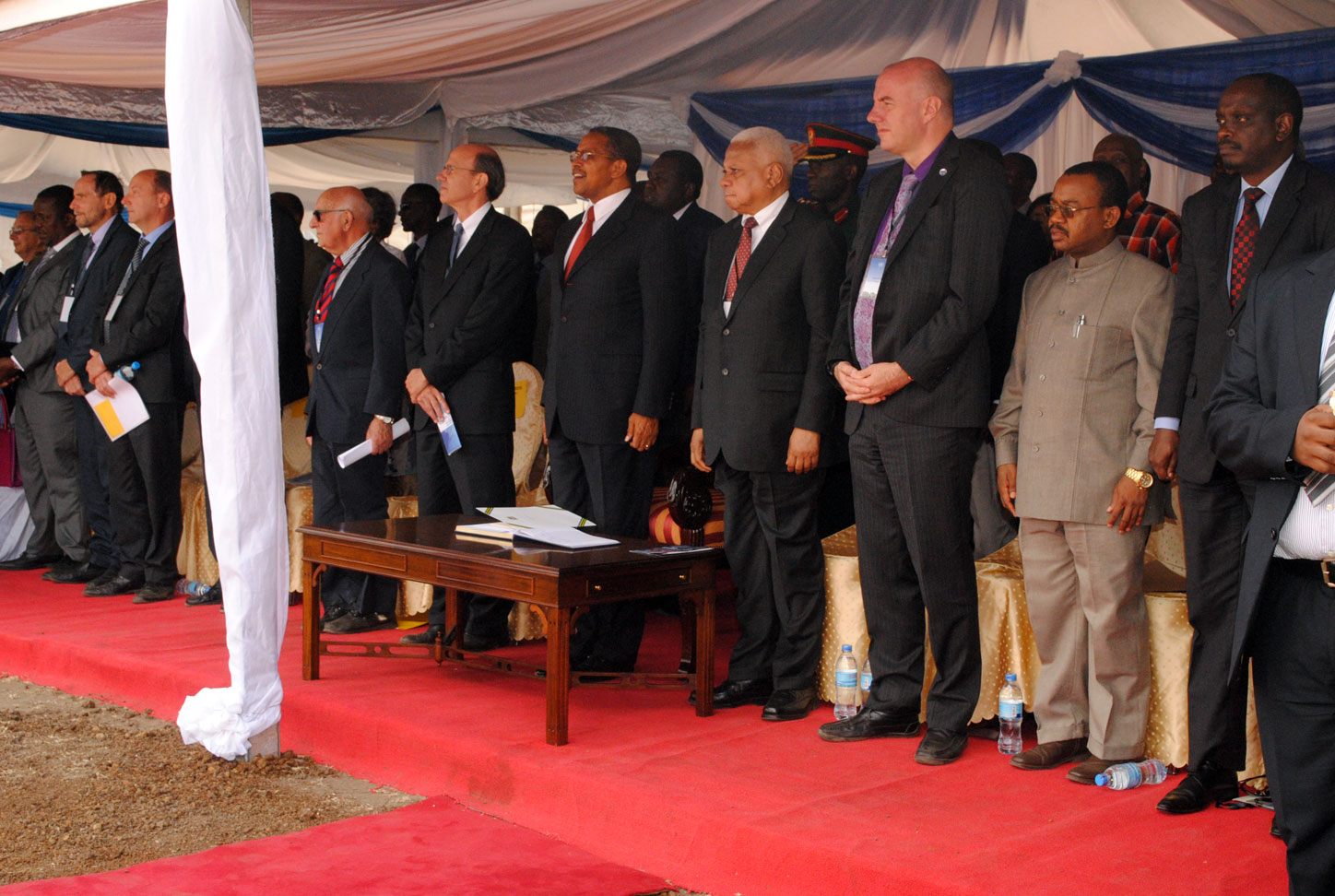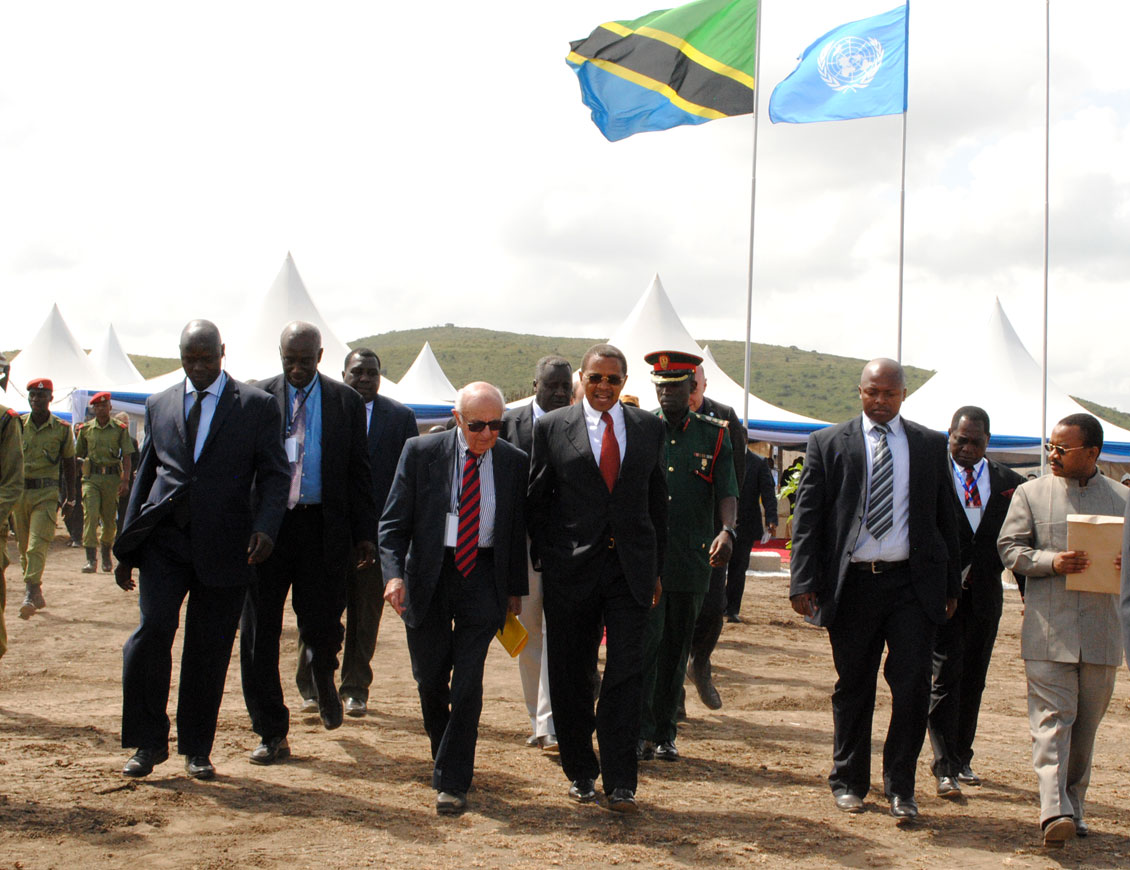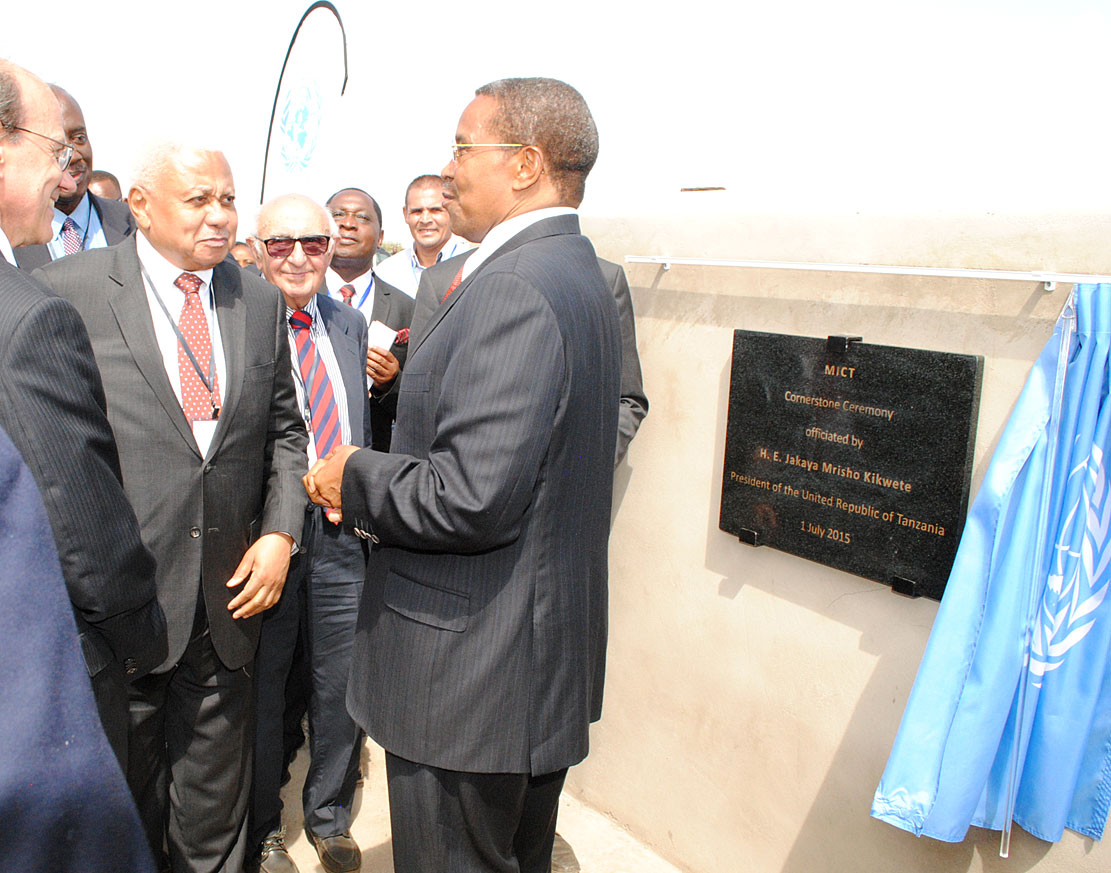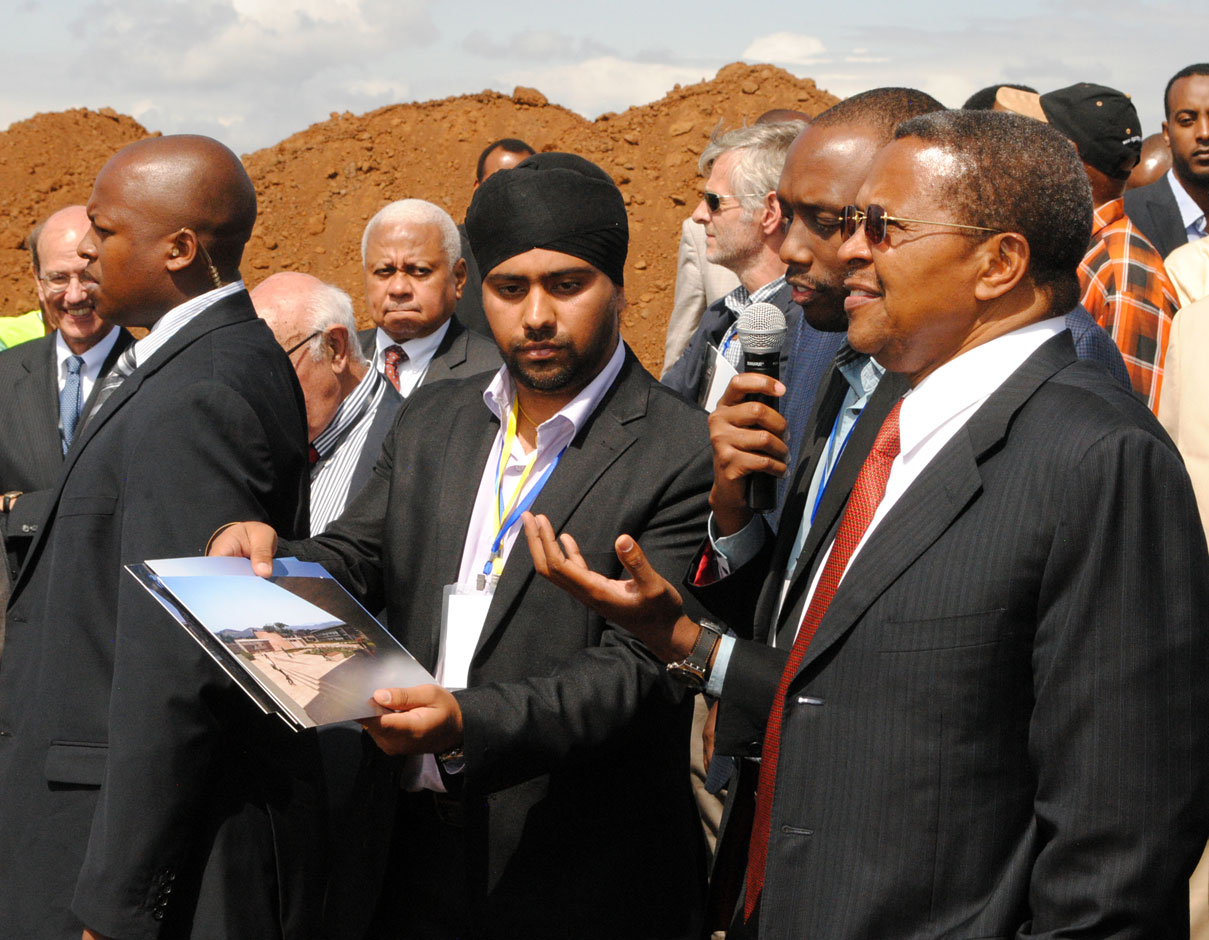The Mechanism unveils cornerstone for new Arusha premises
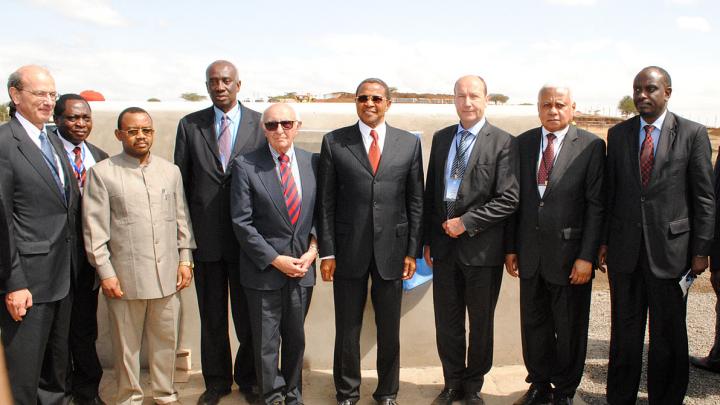
The Mechanism for International Criminal Tribunals (MICT) unveiled the cornerstone for its new premises in Arusha yesterday at a ceremony officiated by H.E. President Jakaya Mrisho Kikwete of the United Republic of Tanzania. The ceremony was attended by the Chief Justice of Tanzania, Justice Mohamed Chande Othman, and a number of other national, regional, and local dignitaries. The Tanzanian Deputy Minister for Foreign Affairs and International Cooperation, Mr. Mahadhi Juma Maalim (MP), Mr. Stephen Mathias, UN Assistant Secretary-General for Legal Affairs, Mr. Stephen Cutts, UN Assistant Secretary-General for Central Support Services, and the Mechanism’s three Principals also spoke at the event.
President Kikwete said “The building to be erected shall be an indelible mark of international intervention to fighting impunity. To me, this building will be a monument for the honour of those innocent men and women who were mercilessly butchered because of their tribal affiliations. Let this building continue to echo endlessly our grief and vow, ‘Never Again’.”
The Deputy Minister for Foreign Affairs and International Cooperation of Tanzania expressed thanks to the international community for its trust in asking Tanzania to host the Mechanism and underscored that the Mechanism’s new home will contribute to the image of Arusha as one of the international legal centres of the world.
Assistant Secretary-General Mathias expressed the heartfelt congratulations of the UN Secretary-General to the Government of Tanzania for its generous contribution of land to the United Nations for the Mechanism and acknowledged the welcome and support given to first the ICTR and now the Mechanism by the people of Arusha and their local representatives. In his remarks, Assistant Secretary-General Cutts stated “I am pleased to note that the new facility exemplifies international best practices in the field of design and construction. And it will serve as an example for future UN construction both here in this region and world-wide.”
The Mechanism’s President, Judge Theodor Meron, explained that the cornerstone was a tangible symbol of the international community’s “extraordinary investment and enduring trust—of a belief not simply in the Mechanism itself but in the fundamental importance of principled accountability, of justice, and of the rule of law more generally.”
Prosecutor Hassan Bubacar Jallow of the Mechanism stated that “We hope that the world, and particularly the Africa region, given the presence of this facility on the continent, will take advantage of its enormous research as well as historical potential. On an occasion such as this, it is only fitting that I also call on and remind all States of their obligation to cooperate with the Mechanism in the arrest and transfer of the fugitives.”
The Mechanism’s Registrar, Mr. John Hocking, said “This building is made in Arusha, for Arusha and for the world. This building is local, but its message is global. It reminds us that impunity is no longer acceptable and accountability is demanded, no matter how powerful the perpetrator, or how helpless the victim.”
Following the unveiling of the cornerstone, President Kikwete and other guests were given a tour of the construction site.
The three buildings of the new premises – the courtroom, the archives and the office building – have been designed to serve the specialized functions of the Mechanism, which include completion of remaining judicial work, archives management, witness protection, supervision of enforcement of sentences and assistance to national jurisdictions.
For more information visit our page on the construction of the Arusha facility.
